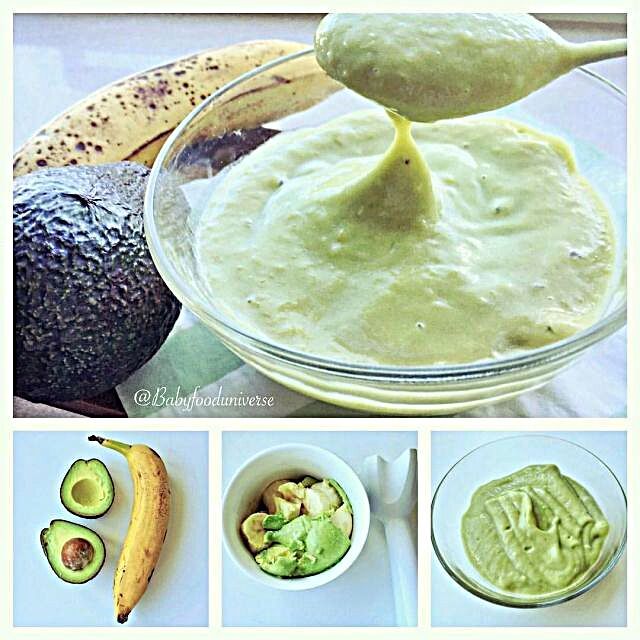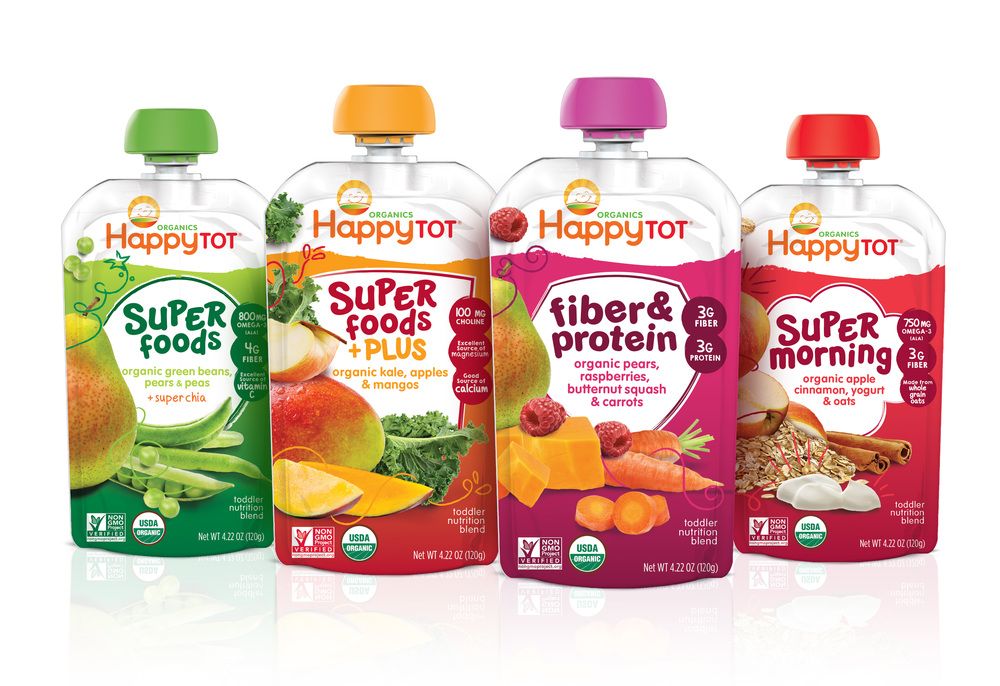Aborted babies in food products
No, food products don’t contain fetal tissue
By ALI SWENSONJanuary 25, 2023 GMT
CLAIM: Flavor enhancers made from aborted fetal tissue are being added to food products without consumers’ knowledge.
AP’S ASSESSMENT: False. Biotechnology companies have frequently used fetal cell lines in their research and testing, but flavor enhancers used in food products do not contain any tissue from aborted fetuses. The Food and Drug Administration said in a statement that it would not approve any food containing fetal tissue for human consumption and is not aware of this ever happening.
THE FACTS: A years-old misconception about the use of fetal cell lines in research has resurfaced online in recent months with the false claim that food manufacturers give customers products made from fetal tissue.
“Flavour enhancers made from aborted fetal tissue are being eaten without the knowledge of consumers,” read one tweet shared thousands of times. “Amounts of these flavour enhancers used in food products are below a certain threshold, so they don’t need to be reported or safety-tested by the FDA. ”
The claim, which also circulated on Instagram with the misleading caption “aborted babies in your food,” was further amplified when a Texas state senator this month introduced a bill calling for the labeling of foods containing “aborted human fetal tissue.”
But there is no basis for such claims, according to the FDA, which said in an emailed statement that it would not condone this and was “not aware of any company ever putting fetal cells into food products.”
“There are no conditions under which the FDA would consider human fetal tissue to be safe or legal for human or animal consumption,” the statement read. The agency added that because it is not aware of any example of this ever happening, it has never taken enforcement action for this violation.
The false claim originates from the fact that many biotechnology companies, including some in the food industry, have used fetal cell lines in a research and testing capacity. Cell lines, which are key to medical research, are cloned copies of cells from the same source that have been adapted to grow continuously in labs.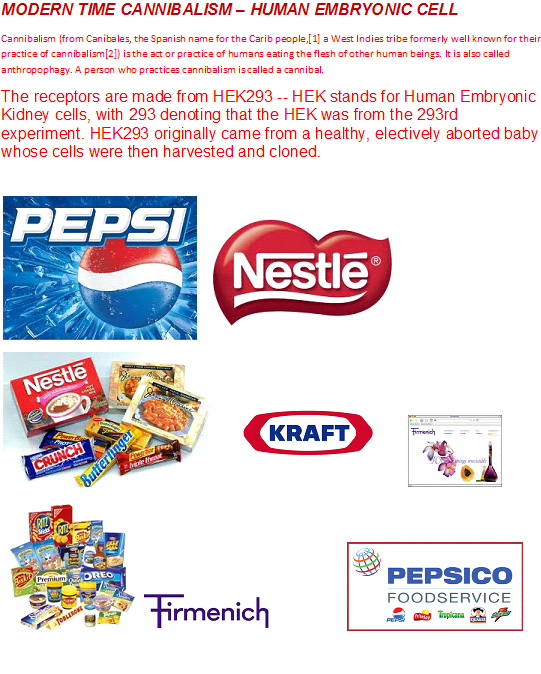 They are very commonly used in pharmaceutical research and vaccine development.
They are very commonly used in pharmaceutical research and vaccine development.
For years, people have criticized and misrepresented the fact that the biotechnology company Senomyx used the HEK293 cell line — or Human Embryonic Kidney 293 — in research involving flavor development. The HEK293 cell line was first established in the early 1970s using cells from a kidney of a fetus.
However, numerous news reports over the years have clarified that the company didn’t put fetal cells into any food products given to consumers.
Senomyx was acquired in 2018 by the Swiss company Firmenich, which did not respond to multiple emailed requests for comment. But as a Senomyx official explained in a 2011 interview with Miami New Times, the company used the cell lines in “basically a robotic tasting system” that isolated human taste receptors in the form of proteins to test out how they reacted to flavors. If a protein reacted positively to a flavor, the company would move on to further taste tests.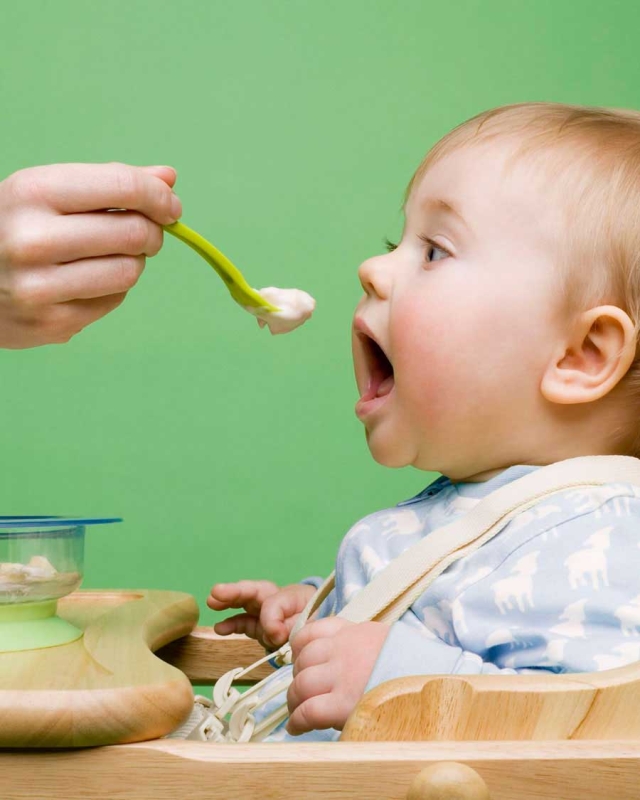
Frank Graham, a professor emeritus in the departments of biology and pathology and molecular medicine at McMaster University, developed the HEK-293 cell line in the 1970s. He told The Associated Press via email that the cells “would be used in tests for various properties of compounds to be used as flavor enhancers” but “would not themselves be incorporated into beverages or other foods.”
“That would make no sense,” Graham said. “To the best of my knowledge the cells are only being used for in vitro testing of various chemicals and compounds.”
Dr. David Gorski, a surgical oncologist and managing editor of the website Science-Based Medicine, has written about misconceptions around fetal cell lines. He confirmed in an email to the AP that fetal cell line research “does not involve actual fetal tissue.”
“It uses cell lines isolated from fetuses, often decades ago,” Gorski wrote.
___
This is part of AP’s effort to address widely shared misinformation, including work with outside companies and organizations to add factual context to misleading content that is circulating online. Learn more about fact-checking at AP.
Learn more about fact-checking at AP.
Fact Check-Food products do not contain human fetal cells
By Reuters Fact Check
7 Min Read
There is no evidence that food products contain cells from aborted human fetuses as flavor enhancers, contrary to a social media claim that revives a related, previously-debunked charge about cells used in biomedical research.
A widely-shared tweet claims that “flavor enhancers made from aborted fetal tissue are being eaten without the knowledge of consumers. Amounts of these flavor enhancers used in food products are below a certain threshold, so they don't need to be reported or safety-tested by the FDA” (here).
The post had received more than 10,000 “likes” and been retweeted over 4,000 times at the time of writing. Additional examples can be found on Facebook (bit.ly/3urNbTN), (bit.ly/3Bdojms).
The claims offer no evidence that food companies incorporate human cells into their products for any reason, but they include a screenshot of text invoking an older claim that a fetal cell line used in many kinds of laboratory research had ended up in soft drinks. That cell line, HEK-293, has been used in laboratory research related to testing food flavors, according to a 2002 study and a 2008 patent application, but that research did not involve incorporating the cells into foods.
That cell line, HEK-293, has been used in laboratory research related to testing food flavors, according to a 2002 study and a 2008 patent application, but that research did not involve incorporating the cells into foods.
COLA CLAIMS
The text in the screenshot, which is dated 2015, reads: “A biotechnology company out of California called Senomyx specializes in the development of food flavorings using aborted embryonic cells for the production of food chemicals. Research by Senomyx into the use of ‘HEK-293’ aborted human fetal cells as a flavor enhancer was published in Pubmed in 2002, after which several patents were filed by them. Additionally, this company has partnered with numerous major processed food manufacturers including Kraft, PepsiCo, and Nestle.”
The graphic image and title in this screenshot date back to at least January 2012, when they appeared in an article on the Gawker website (here).
Confusion and controversy over use of a cell line known as HEK-293 in food-related research date back even further, to at least 2011, when it was the basis of calls to ban certain types of research (here) and to boycott companies that used the HEK-293 cell line in their research and development.
Reuters previously factchecked false claims that PepsiCo drinks contained aborted fetal cells. The claims had originated in a 2011 call from a U.S.-based anti-abortion group, Children of God for Life, to boycott companies partnered with U.S. biotech Senomyx, which was said to be using “aborted fetal cell lines to test their products” (here).
AN OLD CELL LINE
The controversial cell line is derived from fetal cells dating to the 1970s. The HEK-293 cell line was originally created sometime around 1973 or 1974 by Canadian scientist Frank Graham (here). Graham used a lab technique to “transform” cultured cells for use in cancer research. He had started with cultured kidney cells obtained in 1972 by Dutch researcher Alexander Van der Eb, who explained the cells’ origin in a 2001 presentation to the U.S. Food and Drug Administration (on page 77 here). Van der Eb has attested that the cells were derived from human fetal tissue, though he was uncertain if it was from an abortion or miscarriage (ipscell. com/2021/12/293-cells/).
com/2021/12/293-cells/).
HEK-293 cells are used widely in biomedical research, including in studies of cell mechanisms (here). In 2002, Senomyx researchers published a study in the journal Proceedings of the National Academy of Sciences that used the cells to study receptor proteins that detect certain tastes (here ). Google Patents shows that Senomyx had a patent issued in 2008 for “Recombinant Methods for Expressing a Functional Sweet Taste Receptor” that mentions the use of HEK-293 cells (here).
A 2011 CBS News report about the Pepsi allegations suggested that the Senomyx patent was most likely being used to test substances, but that no HEK cells were in finished products: “The company appears to be engineering HEK cells to function like the taste-receptor cells we have in our mouth. This way, Senomyx can test millions of substances to see if they work as different types of taste enhancers without subjecting human volunteers to endless taste tests.” (here).
In 2018, Senomyx was acquired by Firmenich, a global manufacturer of fragrances and flavors (here).
Andrea Duarte, a spokesperson for Firmenich, told Reuters by email, “Neither Firmenich products nor Senomyx products have ever contained any human cell or material.”
A Nestlé spokesperson said via email that Firmenich is a supplier to Nestlé, but that Nestlé does not use any flavor compounds using HEK cells, nor use HEK cells in their research.
Andrea Foote, a spokesperson for PepsiCo said, “While PepsiCo previously partnered with Senomyx on sweetener research, the relationship has concluded, and we do not use any Senomyx ingredients in our products. PepsiCo absolutely does not conduct or fund research that utilizes any human tissue or cell lines derived from embryos or fetuses.”
Kraft did not respond to a request for comment.
VERDICT
False. There is no evidence that any food or beverage products contain cells from human fetuses or derived from fetuses.
This article was produced by the Reuters Fact Check team. Read more about our work to fact-check social media posts here.
Embryonic cells are everywhere: what's wrong with modern cell technology
The issue of the ethics of vaccines and the use of cells from previously aborted children in their development has stirred up with renewed vigor. Around the world, Christians and members of the pro-life communities are debating whether it is right to be vaccinated with such drugs during a pandemic.
We decided to look into the situation in detail, and at the same time find out what prevents scientists from completely abandoning embryonic cell lines in medicine.
"Growing at a colossal rate": what are cell cultures and cell lines Cultivation of cells in containers. Photo from biomedstem.ru
In connection with the development of vaccines, the terms “cell culture” and “cell line” are used.
A “cell culture” is cells from a single tissue (such as skin or kidney tissue) from a human or animal that is grown in laboratories under controlled conditions. A “cell line” is a source of cell culture. As a rule, the line has a name in the form of an abbreviation of letters of the Latin alphabet and numbers - they can be used to determine when and where the cells were taken from.
A “cell line” is a source of cell culture. As a rule, the line has a name in the form of an abbreviation of letters of the Latin alphabet and numbers - they can be used to determine when and where the cells were taken from.
There are dozens of lines (human and animal), they have certain international designations and are stored in special cell banks. There is such a bank in Russia - it is the so-called All-Union Collection of Cell Cultures, the samples of which are dispersed among various scientific institutes.
There are far fewer cell lines obtained as a result of abortions, or so-called embryonic lines, in the world.
Mostly known HEK-293 (obtained from the kidneys of an embryo aborted at 1972), PER.C6 (obtained in 1985 from cells of the retina of an 18-week-old embryo), WI-38 (obtained in 1964 from diploid cells of the lung connective tissue of an aborted girl who was about 12 weeks old), MRC-5 (obtained in 1966 from the lung cells of a 14-week-old boy), RA27/3 (obtained in the USA in 1964 from a fetus infected with rubella) and several others.
At the same time, each of these lines has its own "specialization" and its own unique properties. So, the rubella vaccine, HEK-29, is still being grown on the RA27 / 3 line.3 is notorious for being used by Senomyx to test nutritional supplements.
The PER.C6 line is owned by Johnson & Johnson and has the unique property that the cells of the line grow at an enormous rate: one milliliter of suspension can contain up to one hundred million cells. There are also “universal” lines, for example, about 10 vaccines against various diseases are being developed at MRC-5.
Fetal lines in the food industry: how is it?
The use of embryonic cell lines in the food industry has a history. Senomyx was founded in 1999 by Libert Strier, an American biochemist at Stanford University. Her goal was to research in the field of food additives that enhance the taste and smell of food.
The unique substances that the chemists at Senomyx were developing could not only make the original product sweeter or saltier, but also, for example, block bitterness. Tested nutritional supplements on the HEK29 embryonic cell line3 - It was cheaper than giving samples to volunteers or doing elaborate experiments on animals that couldn't communicate how they felt.
Tested nutritional supplements on the HEK29 embryonic cell line3 - It was cheaper than giving samples to volunteers or doing elaborate experiments on animals that couldn't communicate how they felt.
Special cell lines cultured from oral cavity receptor cells could serve as an alternative to abortive materials, but this technology was more complicated, and in the end it was decided to follow a simple and, most importantly, cheap path. At the same time, HEK293 cells were used only at the testing stage; they did not get into the final product. In total, Senomyx has 113 patents, several hundred different flavors, as well as cooperation with at least seven of the world's largest companies, such as Heinz, Nestle, Pepsi and others.
In 2010, thanks to the American pro-life organization God's Children, information that the flavorings that are used in ketchups, chips, instant cubes and soups, cream, chocolate, carbonated drinks, are produced using unethical technology became widespread. known. A complete list of products can be found here.
known. A complete list of products can be found here.
As a result, most of the partners of Senomyx have disowned cooperation with the company, announcing that they are updating their products. The Senomyx website has not been updated since 2012. How things are today with the testing of flavoring additives in the US and in the world is not known for certain.
Cells grow in bioreactors with a volume of several thousand liters Cultivation of cells in a bioreactor. Photo from process-worldwide.com
In medicine and pharmacology, embryonic cell lines are currently used to create vaccines (vector or live) against measles, rubella, mumps, hepatitis A, rabies, chicken pox, and coronavirus. Human cell lines are needed to propagate the virus, which is then used in the vaccine. After all, viruses, unlike bacteria, need a "host", and the cells of the cell line become this "host".
They are also used to develop drugs for rheumatoid arthritis, hemophilia and cystic fibrosis.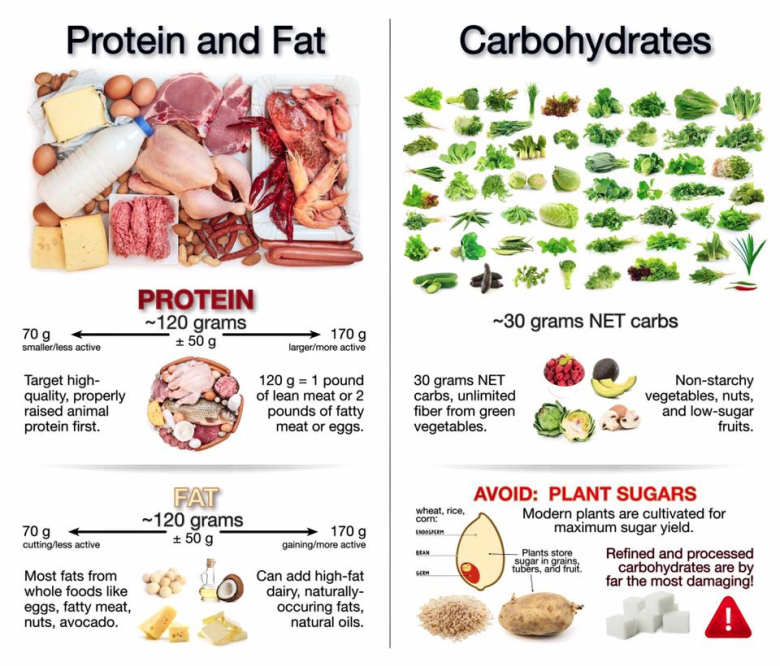 In addition, the HEK-293 line is being used in research into cancer therapies. An adeno-associated virus is also grown on it, which serves as a vector for gene delivery in the Zolgensma drug, which is used in the treatment of spinal muscular atrophy.
In addition, the HEK-293 line is being used in research into cancer therapies. An adeno-associated virus is also grown on it, which serves as a vector for gene delivery in the Zolgensma drug, which is used in the treatment of spinal muscular atrophy.
Embryonic cells can indeed divide almost indefinitely under the conditions created for this in laboratories. Supporters of this method, as an argument justifying the use of abortive material, say that the cell cultures that are used today are the result of a long division and are no longer actually part of the body of the once aborted child.
Obtaining a cell line is as follows. The tissue or organ from whose cells a cell line is to be developed in the future is taken under aseptic conditions, placed in a sterile saline solution and transported to a specialized laboratory.
Tissues and organs are carefully examined in the laboratory, including for possible infection. If it is established that they are “clean”, they are crushed with a scalpel or scissors to pieces no larger than 1-3 mm in size, thoroughly washed from blood cells in several changes of sterile solutions, and then placed in solutions of special enzymes that allow isolating individual cells.
Actually, these very cells that can be isolated by grinding (sometimes this may even require a kind of “sieve” through which the solution obtained from tissues or organs is filtered) is the primary cell culture. It can be started to "grow" with the help of a nutrient medium and a number of special technologies.
Most cell cultures grow in what is called a monolayer, that is, at the bottom of a plastic or glass container, in a one-cell-thick layer. In order for them to multiply faster and more efficiently, special multi-storey containers were invented. (This is how it looks like for example.)
Some types of cells require constant agitation - "shakers" have been invented for them, which shake the vessels with the cells. For example, in Italy, 28 thousand special roller bottles are used simultaneously to create vaccines in the factory. Automation at the same time controls the temperature and speed of rotation. And when the factory replaced smooth glass vials with corrugated plastic vials, increasing the surface area, they received a twenty-fold increase in cells, and doubling the cell population occurs in just over 8 hours.
But the technology that works best is when cells multiply in suspension in a special bioreactor. Such reactors with a capacity of up to 8,000 liters operate in Europe and the United States.
In this case, the actual cells of the embryonic line should not get into the final product (grafting).
When the virus multiplies in sufficient quantity, it is separated from the cell culture by various means and purified from impurities. To do this, different methods can be used - electrophoresis, various chemicals, staining, and even multi-level filtration. The resulting pure virus or its fragments are added to the vaccine along with other substances that will ensure its preservation, stability and, in the future, the necessary effect on the body.
If not used for production, then used for testing Roller bioreactor for cell culture cultivation: A - scheme, B - roller culture system. Image from en.ppt-online.org
Some vaccines, however, use animal cells such as monkeys, rabbits, hamsters, and chicken embryos in eggs.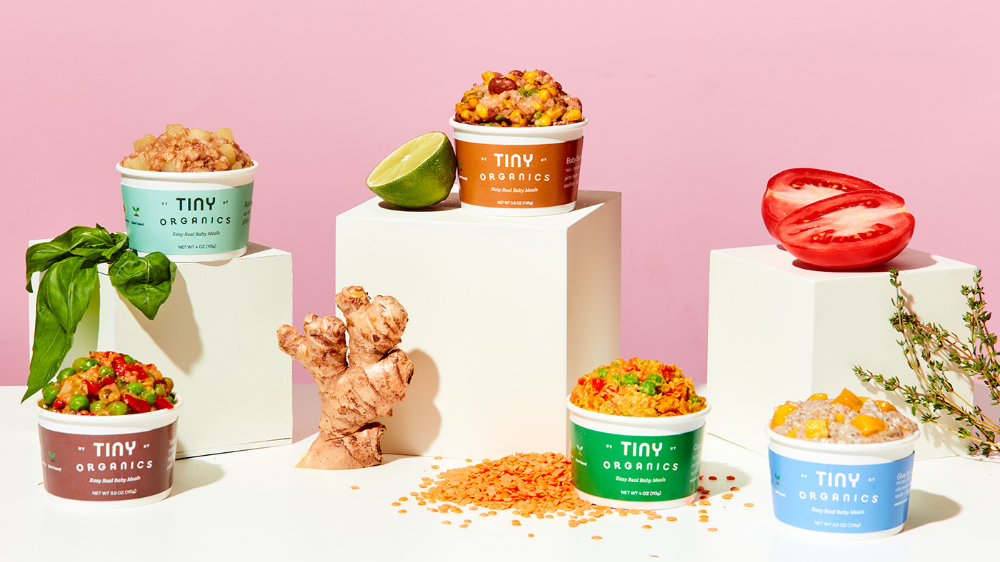 But still, virologists believe that human cell cultures are the most advanced of the laboratory systems for cultivating viruses, and then testing their effectiveness. The use of human cells, in contrast to the material taken from animals, gives greater safety of vaccination, as it guarantees that the immune system does not react to the material of another biological species. The technology is cheap, which is why it is used almost everywhere.
But still, virologists believe that human cell cultures are the most advanced of the laboratory systems for cultivating viruses, and then testing their effectiveness. The use of human cells, in contrast to the material taken from animals, gives greater safety of vaccination, as it guarantees that the immune system does not react to the material of another biological species. The technology is cheap, which is why it is used almost everywhere.
In the case of the latest coronavirus vaccines, it is already known that embryonic cell lines were used in the development of at least Pfizer and Moderna RNA vaccines at the stage of laboratory testing. The connection with the cell lines that appeared as a result of abortions is in the Russian vaccine "Sputnik-V" of the Institute. Gamaleya and preparations of the companies NOVAVAXAB and INOVIO, which are in the stage of clinical trials. Such data was published at the end of 2020 by the American Charlotte Losier Institute, an organization that takes a pro-life position, collects and publishes information regarding abortion and the use of abortive material for medical, scientific and other purposes.
AstraZeneca's coronavirus vaccine uses a chimpanzee adenovirus rather than a human adenovirus as a vector. However, according to data published in the journal Nature, the HEK293 cell line was used in the development of the vaccine.
Curiously, a vaccinologist from the University of Auckland, chair of the WHO Global Advisory Committee on Vaccine Safety Helen Petousis-Harris lines, if not for production, then at least for testing.
“When studying viruses and immune responses in the laboratory, these cell lines are inevitably used to provide reliable results that are relevant to humans,” says Petousis-Harris.
Since only Sputnik-V is currently available in Russia from this list, it is worth telling a little more about it. This is a vector vaccine created on a previously developed and tested one at the N.N. Gamaleya adenovirus platform. This means that the vaccine is based on a vector, a genetically modified virus, into which the genes for the proteins of the outer shell of the SARS-CoV-2 virus are inserted. The vector delivers a fragment of the coronavirus genome into the cell, triggering an immune response.
The vector delivers a fragment of the coronavirus genome into the cell, triggering an immune response.
The Russian vaccine uses adenoviruses as a vector. It is adenoviruses that need to be grown on the HEK293 embryonic cell line, so the Sputnik-V vaccine from this point of view can be considered a drug with an ethically controversial component.
The vaccine of the Russian company "Vector", "EpiVakKorona", consists of artificially synthesized short fragments of viral proteins - peptides recognized by the immune system. It does not seem to involve working with cell lines, at least not for production. (The patent has not yet been published, so there is no exact data.) Regarding the third Russian vaccine, which is still being worked on at the Center. Chumakov, no data yet.
Unethical cell lines can be replaced, but few people are interested in this Amniocentesis procedure. Photo from the site https://gravimed.com.ua/
Supporters of the use of embryonic cell lines in medicine and pharmacology assure that the cell lines obtained decades ago are enough to meet the needs of the entire industry, and situations in which new abortions would be needed in research or, moreover, for commercial purposes, are impossible.
Donald Trump tried to limit the use of new abortion materials
Proponents of the use of embryonic cell lines often argue that the studies that take place with these cells do not require new abortions. However, abortive material continues to be used in one way or another for scientific purposes. It is known that such works are being carried out in Great Britain, India, China, and Singapore. In Russia, the leader in this kind of activity is Professor Gennady Sukhikh, who heads the Federal State Budgetary Institution “N. IN AND. Kulakov” and is considered the author of the so-called “fetal therapy”, during which abortive tissues are used.
In 2019, US President Donald Trump made an attempt to limit the use of tissue obtained from elective abortions for scientific purposes. At that time, his administration effectively blocked scientists from the National Institutes of Health from obtaining any fetal tissue for further research. Funding for this kind of research has also been substantially reduced.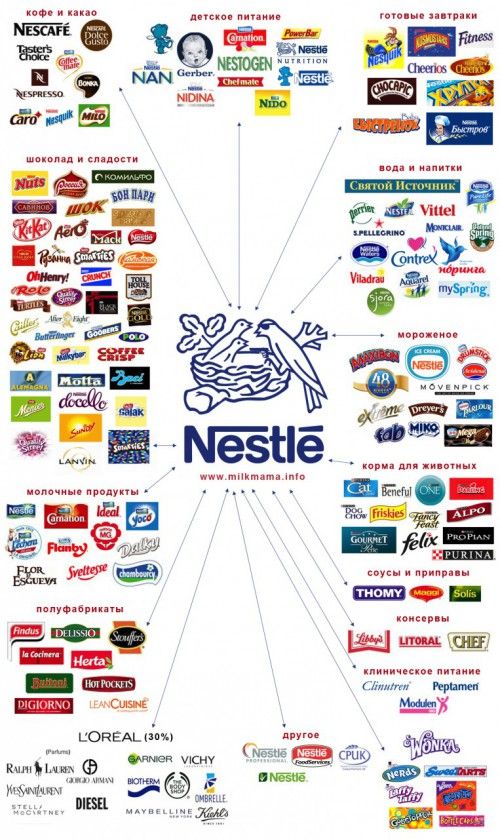
In addition, a so-called Human Fetal Tissue Research Ethics Advisory Board has emerged in the United States, which over the past two years has issued approval only for studies that involve the search for alternative methods in order to completely move away from the use of abortion waste in the future.
On the eve of Joe Biden's inauguration, he was approached by representatives of the American scientific community with a request to lift the moratorium established by his predecessor. In their letter, scientists refer, among other things, to the fact that this will allegedly speed up research to find a cure for covid.
Deb Wombold , a Merck representative, gave a partial answer to the question of why the world's pharmaceutical industry is not switching to ethical vaccines without the use of embryonic cells. She explained that in the case of the measles, mumps and rubella vaccine, switching from the WI-38 line to another cell line (eg animal) is a major challenge, both in terms of efficacy and quality of the vaccine.
“Because the process of vaccine development is so dependent on the particular cell line in which it occurs, it is not possible to simply replace one line with another. And even if it succeeded, there is no guarantee that the level of safety and effectiveness would be comparable to already licensed vaccines,” says Ms. Wombold.
Attempts to find an alternative are still rather in the theoretical field.
Tak, Ph.D. embryonic cells obtained as a result of a miscarriage.
David Prentice , vice president of the Charlotte Losier Institute, suggests creating cell lines based on cells obtained from amniocentesis, a procedure for collecting amniotic fluid from a pregnant woman.
But here again the main argument comes into play: existing embryonic cell lines are cheap, while new technologies will take time to develop, study and implement. Not everyone is ready for this.
Ethical technologies need to be developed Photo: invest.
 mosreg.ru
mosreg.ru The question of the ethics of vaccines and their connection with abortive materials has been raised more than once by representatives of different faiths.
In December 2020, the Vatican stated that “in the absence of an alternative, the use of vaccines produced using cell lines from aborted embryos is morally acceptable, and it should be borne in mind that the refusal to vaccinate due to the rejection of such vaccines “may increase risks for public health".
The official position of the Russian Orthodox Church on the use of vaccines against coronavirus, which are somehow associated with embryonic cell lines, is not yet available. It is known that the relevant requests were sent to all developers of Russian vaccines, and representatives of the Institute. The Gamaleyas confirmed they were using the HEK29 cell line3 for the cultivation of adenovirus, but at the same time they emphasized that there are no abortive cells in the final product, and the creators of EpiVacCorona hastened to assure that their vaccine is as ethical as possible.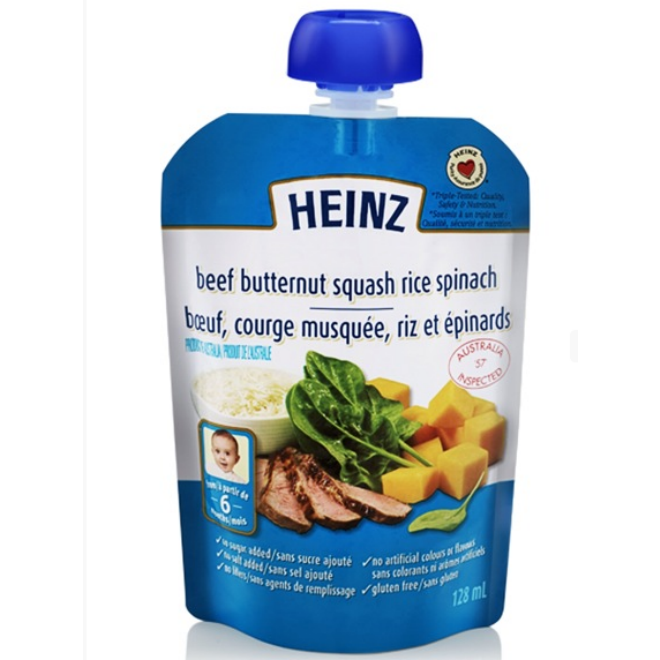
At the present time the Church, in resolving this issue, refers to two documents. First of all, it is "Fundamentals of the Social Concept", which says: "Condemning abortion as a mortal sin, the Church cannot find justification for it even if someone may receive health benefits from the destruction of a conceived human life."
On the other hand, in 2009, when a similar controversy broke out over measles vaccination, the Russian Society of Orthodox Doctors issued a statement acknowledging the temporary use of vaccines that use abortive material in their development, but saying the following: “At the same time, we consider it necessary to speak strongly in favor of the use of alternative (ethical) vaccines, when available. It is also necessary to press the Government of Russia, the Ministry of Health and Social Development, as well as the pharmaceutical industry to create domestic alternative (ethical) vaccines or purchase them in countries that produce them.”
Plant-based ethical vaccines of the future? Photo: mali maeder/Pexels
From the above, we can conclude that the key point in the problem of using abortive materials in the creation of vaccines is precisely the request for ethical products. It seems that until it is sufficiently formulated and voiced by various organizations, groups and individual opinion leaders, things will not get off the ground.
It seems that until it is sufficiently formulated and voiced by various organizations, groups and individual opinion leaders, things will not get off the ground.
And yet, there is hope, such works are gradually appearing. An example of this is the so-called "vegetable" vaccine, which scientists from the Biological Faculty of Moscow State University are working on.
It uses tobacco mosaic virus as an adjuvant - a substance that facilitates the delivery and correct expression of certain antigens during vaccination. Tobacco is infected with a virus, then it is isolated from plants, subjected to heat treatment, and it becomes spherical from a rod. Added to this spherical particle are fragments of the COVID-19 pathogen protein, which, due to the properties of the plant virus, attach perfectly to it, so that no additional chemical agents need to be used for this.
Professor Alexei Agranovsky, Head of the Virology Department of the Biological Faculty of Moscow State University, assured Miloserdiye. ru that embryonic cell lines, as well as animal cells, are not used at the stage of vaccine design. In the future, at the testing stage, there will be experiments on laboratory animals, but in general it can be said that this vaccine will become ethically acceptable.
ru that embryonic cell lines, as well as animal cells, are not used at the stage of vaccine design. In the future, at the testing stage, there will be experiments on laboratory animals, but in general it can be said that this vaccine will become ethically acceptable.
By the way, MSU has already developed a vaccine against rubella using a similar technology, and it proved to be safe in animal tests. There are a number of other vaccine candidates that are being worked on.
“These studies are of fundamental importance for theoretical science, because the more we know, the more armed we are. You never know what epidemics will be in the future - you need to be able to use different platforms, ”says the scientist.
“Having another vaccine, even when there are already several options, is good,” explains Aleksey Agranovsky. “And not just because people should have a choice. For example, Sputnik-V can be vaccinated once, and if there is a need for revaccination, there is a risk that it will be ineffective.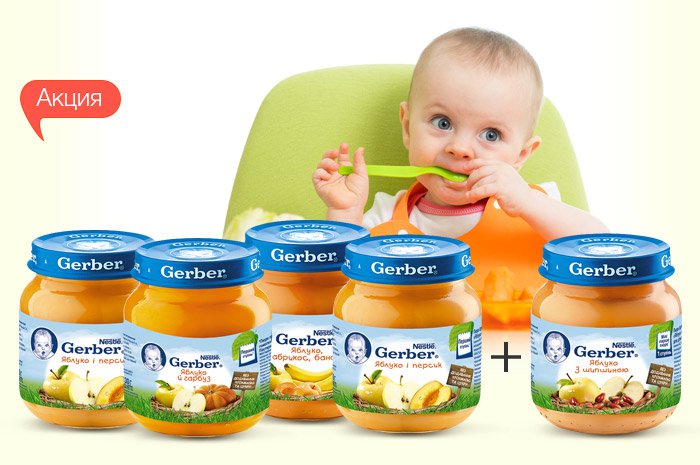 ”
”
What they feed us. Part 2 (aborted "stuff")
Arguments of the Week → Opinion 13+
November 18, 2022, 08:54 Konstantin Kulikov,
In continuation to the first part. Eshki, pesticides, GMOs and even insects in the products now you will hardly surprise anyone. But few people know about the human content in products...
Human content in products Pepsi will release a drink based on human embryonic cells. The US Federal Securities and Exchange Commission (SEC) has effectively authorized PepsiCo to launch a new flavor-enhancing soda based on human embryonic abortion cells.
 The food giant will be allowed to contract with biotech company Senomyx, which uses kidney cells from dead embryos (HEK 293 - Human Embryonic Kedney) in the development of flavor enhancers. (Source: RBC).
The food giant will be allowed to contract with biotech company Senomyx, which uses kidney cells from dead embryos (HEK 293 - Human Embryonic Kedney) in the development of flavor enhancers. (Source: RBC). HEK 293 (Eng. Human Embryonic Kidney 293) is a cell line derived from human embryonic kidneys. It is used in the food, cosmetic and pharmaceutical industries.
Senomyx is an American biotechnology company working to develop food additives that enhance the taste and smell of food. The company aims to reverse engineer human receptors that respond to taste and aroma. The company's goal is to produce substances that would make food "tastier". Senomics has patented the scent using its own taste-sensing system. These receptors were previously obtained in HEK29 cell culture.3. HEK293 cells are derived from kidney cells of an aborted baby. These cells were obtained from a healthy aborted human fetus in the 1970s. Using information from the human genome, Senomics has identified hundreds of taste buds and has now received 113 patents.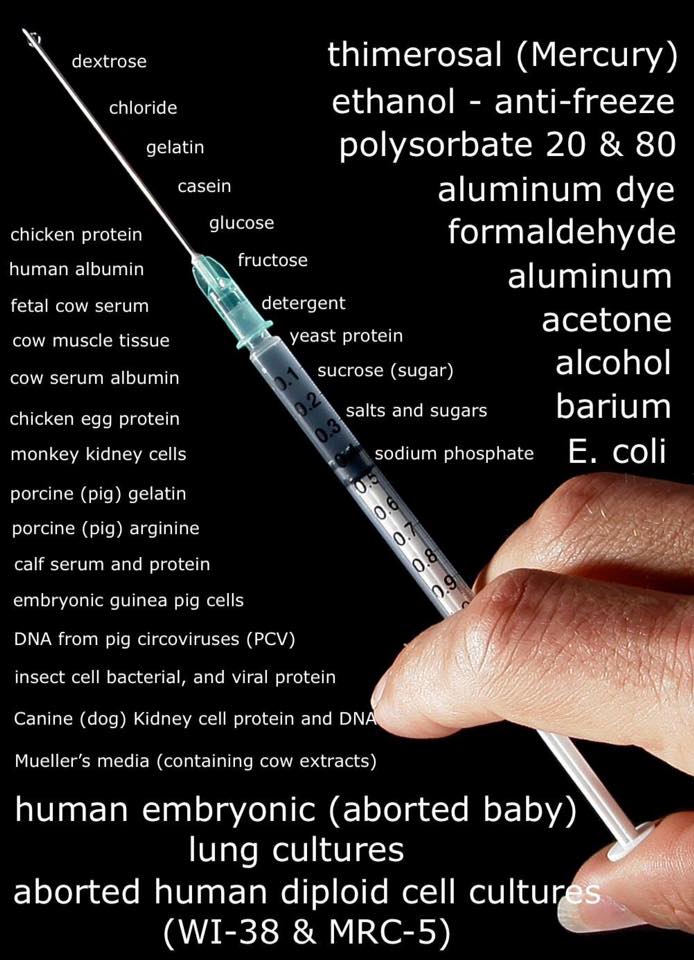 Senomics cooperates with 7 major global food companies and jointly develops technologies. Senomics products enhance the intensity of taste. Since a very small amount of the substance is used, it is not necessary to mark it on the label, and according to the classification parameters, additives fall into the broad category of “atypical tastes”. For a similar reason, the components are not controlled by the FDA . Collaborates with companies: "Nestle", "Lays".
Senomics cooperates with 7 major global food companies and jointly develops technologies. Senomics products enhance the intensity of taste. Since a very small amount of the substance is used, it is not necessary to mark it on the label, and according to the classification parameters, additives fall into the broad category of “atypical tastes”. For a similar reason, the components are not controlled by the FDA . Collaborates with companies: "Nestle", "Lays".
At the moment the site of this company is not working, and it is not easy to find traces. But with the proper knowledge and skills, using special programs, you can find a backup copy. As the saying goes, the Internet remembers everything. The company's website (web.archive.org/web/20180603154627/http://www.senomyx.com/) states: "...Our products are used by many of the world's leading food and beverage companies." Indeed, here (web.archive.org/web/20180607224143/http://www.senomyx.com/our-expertise/our-partnerships) you can see a list of several partners: PepsiCo, Firmenich, Ajinomoto, Co. Inc. Nestlé.
Inc. Nestlé.
PepsiCo is an American multinational food and beverage corporation, manufacturer of soft drinks and other food products. The company produces soft drinks, juices, snacks and other food products under the brands: Amp Energy, Aquafina, Aquafina Flavorsplash, Aunt Jemima, Cap'n Crunch, Cheetos, Chester's, Chipsy, Cracker Jack, Crunchy, Diet Mountain Dew, Diet Mug, Diet Pepsi, Diet 7up (outside US), Diet Sierra Mist, Doritos, Duyvis, Elma Chips, Emperador, Frito-Lay, Fritos, Frustyle, G Series, G2, Gatorade, Grandma's, Imunele, Izze, Kas, Kurkure, Lay's, Life , Lifewater, Manzanita Sol, Marias Gamesa, Matutano, Mirinda, Miss Vickie's, Mother's, Mountain Dew, Mountain Dew Code Red, Mountain Dew Kickstart, Mug, Munchies, Naked, Near East, O.N.E., Paso de los Toros, Pasta Roni, Pepsi , Pepsi Max, Pepsi Next, Propel, Quaker, Quaker Chewy, Rice-A-Roni, Rold Gold, Rosquinhas Mabel, Ruffles, Sabritas, Sakata, Saladitas, Sandora, Santitas, 7up (outside US), 7up Free (outside US) , Sierra Mist, Simba, Smartfood, Smith's, Snack a Jacks, SoBe, SoBe Lifewater, SoBe V Water, Sonric's, Stacy's, Sting, SunChips, Tonus, Tostitos, T rop 50 Tropicana Tropicana Farmstand Tropicana Pure Premium Tropicana Twister Vesely Molochnik Walkers Agusha "Miracle", "I" and others.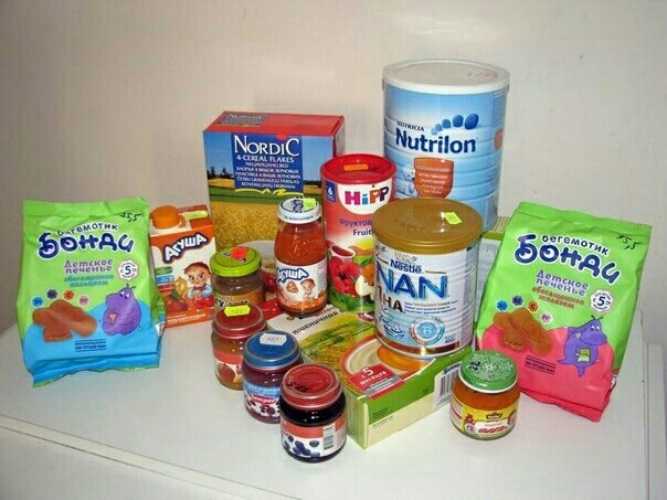
Ajinomoto, Co. Inc is a Japanese company that manufactures condiments, sports nutrition, nutritional supplements, vegetable oils, frozen foods, beverages, sweeteners, amino acids and pharmaceuticals. The most famous product is monosodium glutamate under the brand name "Ajinomoto". Also, Ajinomoto Co., Inc. specializes in professional sports nutrition and health nutrition and fitness components. Products presented on the Russian market are shown in the picture below.
Firmenich SA is a private Swiss company. It is a world leader in the development and production of aromatic substances for the perfume and food industries and occupies about 14% of the global aromatics market. The company controls the entire process - from the cultivation, collection and processing of raw materials, to scientific research and industrial production of natural and food flavors (there are more than 1000 flavors in the collection). Firmenich clients: Yves Saint Laurent, Christian Dior, CIEL parfum (CIEL parfum is the leader of the Russian perfumery market), Georgio Armani - Attitude; Disel - Finally Legalised; Dior - Midnight poison Marc Jacobs - Daisy Dolce & Gabbana - Light blue; Gucci - By Gucci Giorgio Armani - Emporio Armani Diamonds; Estee Lauder - Sensuous.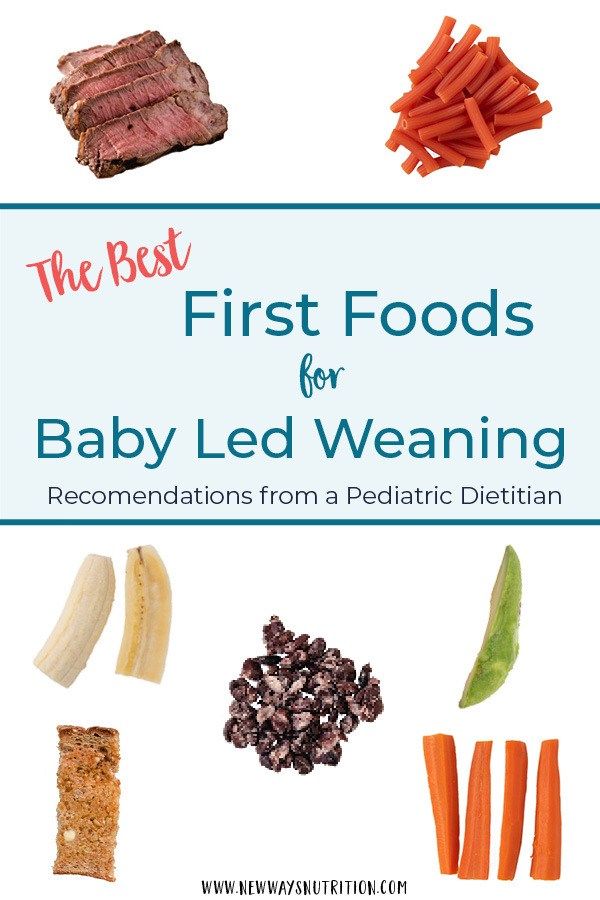
Nestlé is a Swiss multinational corporation, the world's largest food manufacturer. Nestlé produces instant coffee, mineral water, chocolate, ice cream, broths, dairy products, baby food, pet food, pharmaceuticals and cosmetics. The main brands are KitKat, Maggi, Nescafe, Nesquik, Nestea. The Nestlé product range has over 8,500 consumer product brands since its inception. In Russia, the company produces a wide range of food products under the trademarks Nescafé, KitKat, Nesquik, Ekstrem, Russia is a Generous Soul, Bon Pari, Nuts, Gold Mark, Maggi ”, “Perrier”, “Friskies”, “Felix”, “Purina ONE”, “Gourmet”, “Darling”, etc. In Russia, Nestlé controls the following enterprises: chocolate factory “Russia” (Samara), ice cream factory in Zhukovsky, Moscow region, the Maggi plant in Vyazniki, Vladimir region, the Kamskaya confectionery factory (Perm), the instant and sublimated coffee factory (Timashevsk, Krasnodar Territory), the baby food factory and the Bystrov factory (boiled cereals and instant cereals, Vologda), pet food factory (Vorsino village, Kaluga region), etc.
It is worth noting that following the hype and boycott of PepsiCo products, in a 2012 letter, the PepsiCo vice president responded to the Children of God for Life boycott and informed consumers that PepsiCo does not and does not funds research using embryonic or fetal derived cell lines, and that Senomyx does not use HEK cells for research conducted on behalf of PepsiCo. (In addition, the information was posted and then removed from the PepsiCo website. Why would it be removed?) It is important to note that shareholder persistence contributed to this. In a management correspondence with PepsiCo: “Shareholders are demanding that the Board of Directors adopt corporate policies that recognize human rights and apply ethical standards that do not include the use of aborted human remains in either private or collaborative research and development agreements” (but acceptable cell lines: E. coli, yeast, insect, amphibian, Chinese hamster ovary). Correspondence can be found on the US government website of the Securities and Exchange Commission.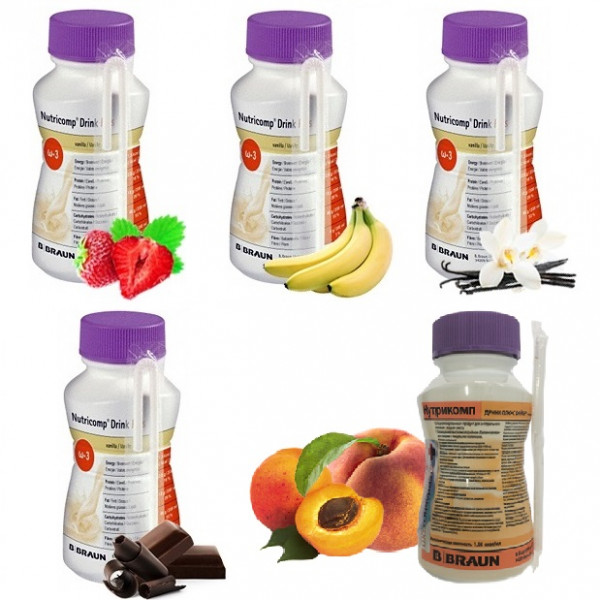
No such official and open statements have been received from other Senomyx partner companies. Draw your own conclusions. And do not count on the fact that its presence in the product will be written to you on the label. This is commonly referred to as "natural flavor". And they won’t write for the convenient reason mentioned above: “Since a very small amount of a substance produced by the company in the production of food and cosmetics is used, it is not necessary to mark it on the label, and according to the classification parameters, additives fall into the broad category of “atypical tastes”.”
For reflection...
Few people understand what is really going on with manufacturers and retail chains. This is only the “tip of the iceberg” indicated here, there is still quite a lot of information “for consideration”. For example, stores have to wash food after it has been poisoned, but nobody does that. At the same time, these specialists do not need licenses to process stores from cockroaches and rats. You yourself do not see insects in the hall, but there are a lot of them in stores. Up to 30 pieces per square meter. Sometimes there are tens of thousands of cockroaches in one store. Shops are required to carry out disinfection at least once a month. Almost no one ever removes products from the shelves to the warehouse, so they are usually covered with a film. For example, bread, but this has nothing to do with fruits and vegetables, including watermelons and melons, what will happen if nothing is washed? For example, a child took an apple, did not wash it, as they like to do, and ate it. And there are two options: either he has an allergy, or not. If not, then three days of diarrhea and vomiting, but not death. Common signs of food poisoning. Only dichlorvos can specifically kill. If there is an allergy, then everything is different. Everything can end very badly (Source: Komsomolskaya Pravda).
You yourself do not see insects in the hall, but there are a lot of them in stores. Up to 30 pieces per square meter. Sometimes there are tens of thousands of cockroaches in one store. Shops are required to carry out disinfection at least once a month. Almost no one ever removes products from the shelves to the warehouse, so they are usually covered with a film. For example, bread, but this has nothing to do with fruits and vegetables, including watermelons and melons, what will happen if nothing is washed? For example, a child took an apple, did not wash it, as they like to do, and ate it. And there are two options: either he has an allergy, or not. If not, then three days of diarrhea and vomiting, but not death. Common signs of food poisoning. Only dichlorvos can specifically kill. If there is an allergy, then everything is different. Everything can end very badly (Source: Komsomolskaya Pravda).
Another example, and what is important, each of you can check it yourself. Each store, manufacturer, etc. must be registered as a legal entity, which means that they must have a PSRN (state registration number). This is open information and finding the OGRN is quite simple (you can also on the Internet).
must be registered as a legal entity, which means that they must have a PSRN (state registration number). This is open information and finding the OGRN is quite simple (you can also on the Internet).
Further, on the website of the Federal Tax Service, enter the PSRN number and you will instantly receive an extract from the YUGRUL. You can find a lot of interesting things in this extract. Let's check the already mentioned Nestle company ...
NESTLE RUSSIA LLC has PSRN 1067746759662.
Next, insert the PSRN number in a special column.
And press “find”, this is how you get an extract from the UGRYL… if the specified activity is carried out for medical purposes) and genetically modified organisms of III and IV degrees of potential danger, carried out in closed systems.
JSC CONFECTIONERY CONCERN BABAYEVSKY has a similar license, OGRN 1027700070881, in the extract 77 item. Why do you think such licenses are given to these companies?
Well, these are manufacturers, but what kind of licenses do retail chains have? Let's check out a network like Pyaterochka.

